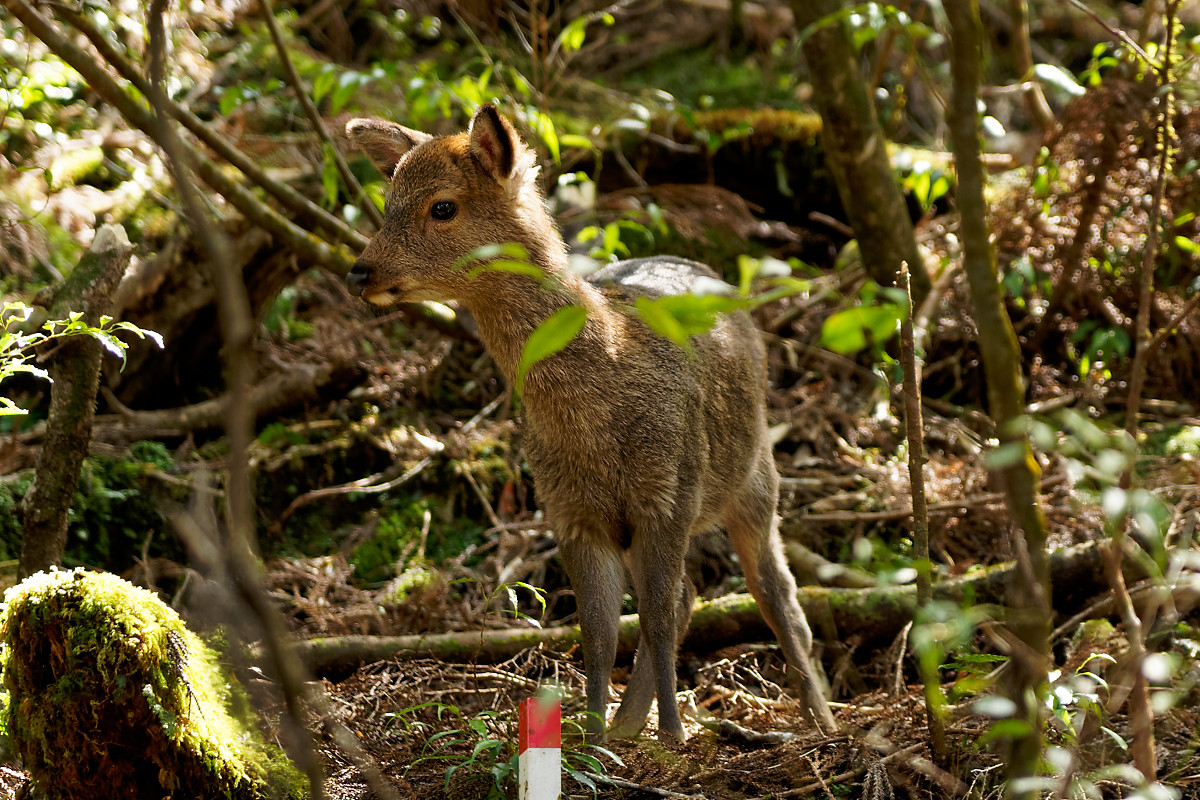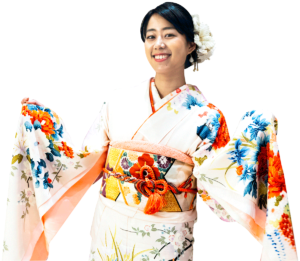Traveling to Japan sits high atop the travel wishes of many worldwide. As evidence for this, Japan welcomed 28.7 million visitors, an increase of 18 million from the previous year. This will only increase with the Tokyo Olympics soon to begin.
Japan has managed to make itself a more desirable destination in the past few years through various strategies. One of these was capitalizing on anime and manga and helping it grow in popularity over the years. In addition to this, Japan has also grown into a top culinary destination with Tokyo having more Michelin restaurants than any other cities in the world.
Whether you are fond of anime and manga, curious about the richness of Japanese culture, wish to eat your way around Japan, or are interested in traveling in Japan for the various other reasons that exist, we are here to help.
Although polls show that over 90% of tourists in Japan reported being satisfied, you’d best be prepared before coming! This post aims to do just that. Prepare you in every possible way to make your trip to Japan as enjoyable as possible, and for you to arrive armed with the knowledge necessary to tackle whatever circumstances come about while in Japan.
As such, we’ll go through the different regions Japan is comprised of, the major airports, the money issue, and how to get around.
TIME IN JAPAN
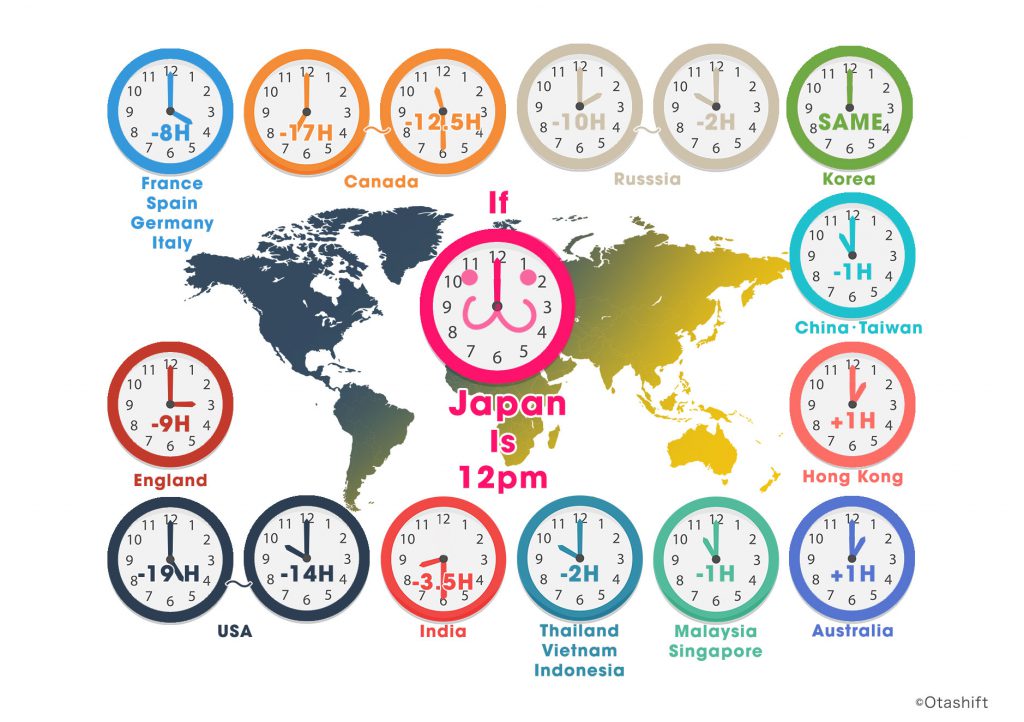
Those coming from huge countries like the U.S, or Australia might have a different perspective on this, but Japan is not a small country. However, although it stretches far enough from east to west to be split into two time zones (more, if Okinawa is considered), Japan only has one. The Japan Standard Time (JST, UTC+09:00). This makes Japan ahead of most of the world, and can make communication with friends and family quite difficult at times. The JST does not observe daylight saving time, but if your country does, the time difference will vary depending on the time of the year. Check out the figure above for an idea of the time difference between your home country and Japan during standard time.
It gets dark relatively early in Japan because of it’s position on the globe relative to the sun. When daylight is at its longest, it usually doesn’t get dark until 19 or 20 p.m. In winter, however, it often gets dark before 17 p.m.
WEATHER IN JAPAN

Japan’s long stretch from northeast to southwest, and Okinawa’s position near the South China Sea result in a rich climate diversity. There are roughly six climate zones throughout the country. They range from really cold (Hokkaido), to temperate (Honshu), to warm-ish all year (Okinawa).
TOKYO AREA
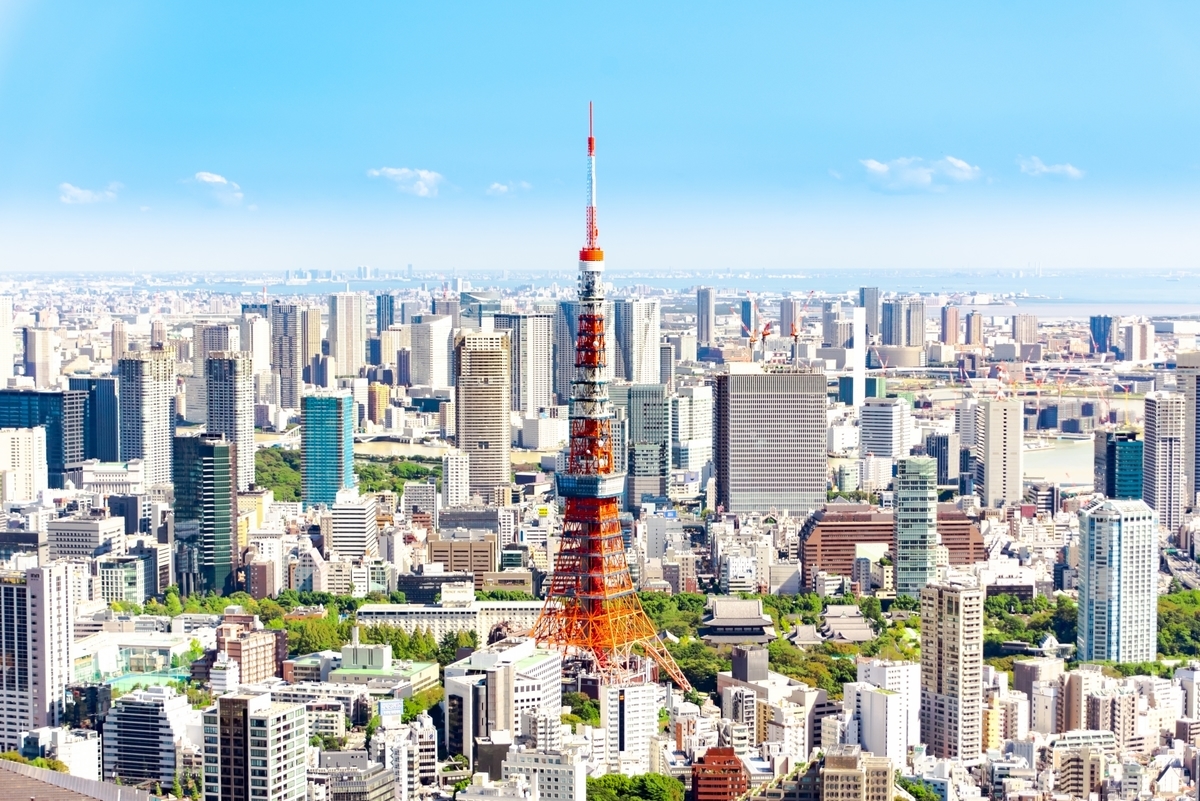
Like the rest of Japan, the Tokyo (=東京) area and the rest of Kanto have four distinct seasons. Winters are mild and the temperature rarely drops below zero degrees. In addition, snow is not very commonplace. At most it will there will usually light snowfall once or twice a year.
Early spring is a bit akin to the preceding winter while the second half of spring is cool to slightly warm. The second half of spring is the most pleasant part of the year, in my opinion.
Summer is extremely hot and humid. The temperature in Tokyo often near 30 °C and sometimes go beyond. The start of summer from June to July is also considered the rainy season and Tokyo is in a constant state of precipitation. As soon as the rainy season ends, the hellish summer begins.
Autumn in Tokyo feels quite short. It seems mostly to be a continuation of summer and abruptly leads to winter. The time between the leaves dropping and the real cold kicking off is quite brief.
KANSAI AREA: OSAKA-KYOTO

Winter in Kyoto (=京都) and Osaka (=大阪) are very similar to Tokyo’s, although Osaka is generally a degree or so warmer than both Tokyo and Kyoto. The two major cities of the Kansai (=関西) area also do not experience much snowfall. However, due to Siberian winds’ advection by northwestly winds, the northern part of Kansai along the Sea of Japan sees heavy snowfall in winter.
Spring is essentially a carbon copy of Tokyo’s. However, temperatures are slightly higher, Osaka’s being the highest of the three. Northern Kansai remains cold for slightly longer period than the central and southern coastal parts.
Summer commences with a rainy season from June to July, followed by the aforementioned hellish heat and humidity. Osaka is generally a degree or so hotter than Kyoto, and temperature in both can sometimes reach 35 °C.
Autumn in Kansai has a large amount of precipitation, as well as a satisfying mixture of refreshing air and sunny days thanks to the large number of passing anticyclonic systems.
HOKKAIDO

Hokkaido (=北海道) is massive and as such the weather in the north is very different from the weather in its southern part. Winter is Hokkaido can be very harsh, especially in inland areas. Temperatures can reach -20 °C and there is very heavy snowfall. Although this may scare those of us who stay away from the cold, Hokkaido’s climate and mountain range attract many to its ski resorts every year.
Spring sees a gradual rise in temperature with frequent significant day to day variation going from warmer to colder. The second half of spring sees longer sunshine duration thanks to anticyclonic systems.
Hokkaido largely escapes the rainy season which affects the rest of Japan, although precipitation does increase around August. However, Hokkaido does not escape the hellish summer heat which lay waste to the rest of the country. Summer in Hokkaido sees temperatures often near 30 °C or above.
Autumn in Hokkaido is marked by a gradual drop in temperature with occasional snowfall along the Sea of Japan.
OKINAWA
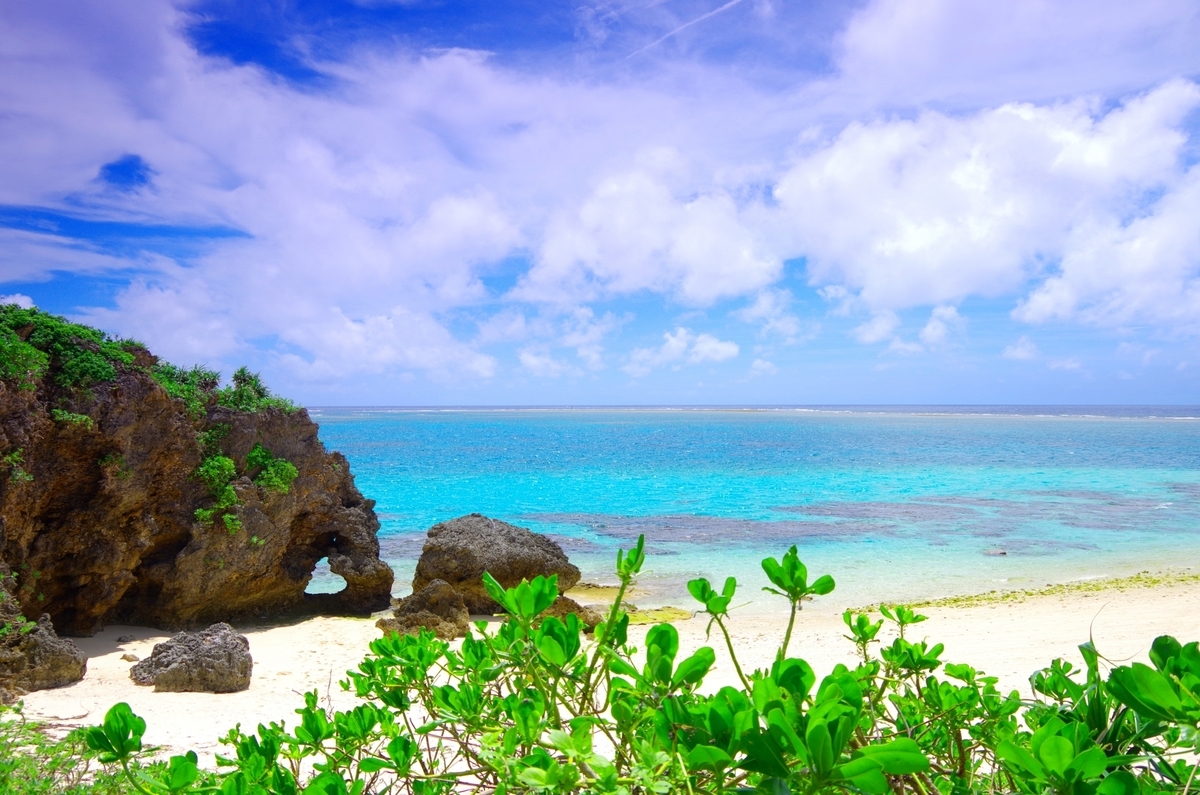
Out of the areas which Japan is comprised of,Okinawa (=沖縄) sees the lowest variation in temperature throughout a year. Winters in Okinawa are very mild, and the temperature is generally around 15 °C. However, winter is Okinawa is often cloudy and sees frequent rain.
Spring in Okinawa sees the gradual rise in temperature and culminates with the rainy season which starts in early May, before the rest of the country.
Summer sees the continuation of the rainy season which ends in late June. Okinawa is mostly spared from the infamous Japanese summer heat. Thanks to its oceanic climate, Okinawa very rarely sees temperature exceeding 35 °C, unlike the rest of Japan.
In Autumn, temperatures in Okinawa slowly fall until it becomes cool mildly warm and pleasant. Autumn also marks the start of typhoon season. Because of its geographical location, Okinawa is hit the most severely and is generally hit by the typhoons (tropical cyclones) at their peak strength.
For those interested in more detailed information on climate in Japan and cyclonic trends, head over to the Japan Meteorological Agency’s website.
JAPANESE NATIONAL HOLIDAYS IN 2019

Japan is one of the countries with the most public holidays. This is perhaps as a result to force workers to take days off, as they often do not take advantage of their paid off-days. 2019 is a very special year, as far as public holidays. The current emperor, Akihito has decided to abdicate the throne, delegating it to his son, Naruhito. Both the abdication and the enthronement as set to take place this year. As a result, new holidays have been created to celebrate both the soon to be previous emperor, and the ascension of the coming one.
This is a special moment in the history of Japan. Akihito has been the emperor of Japan during a new era of peace, and economic and technological boom after the war. Naruhito, on the other hand, will be the first emperor born after the war in the new Japan whose materialization his father sat on the throne for.
If you’ve paid special attention to the calendar above, you would have noticed a series of the holidays coming one after the other in quick succession at the end of May. This is known as Golden Week. Golden Week is the yearly occurrence of a number of holidays all happening during the span of a week or so. Although sometimes there are days between the holidays which are work days, most people take the entire week off, making Golden Week one of the most important holiday periods in Japan.
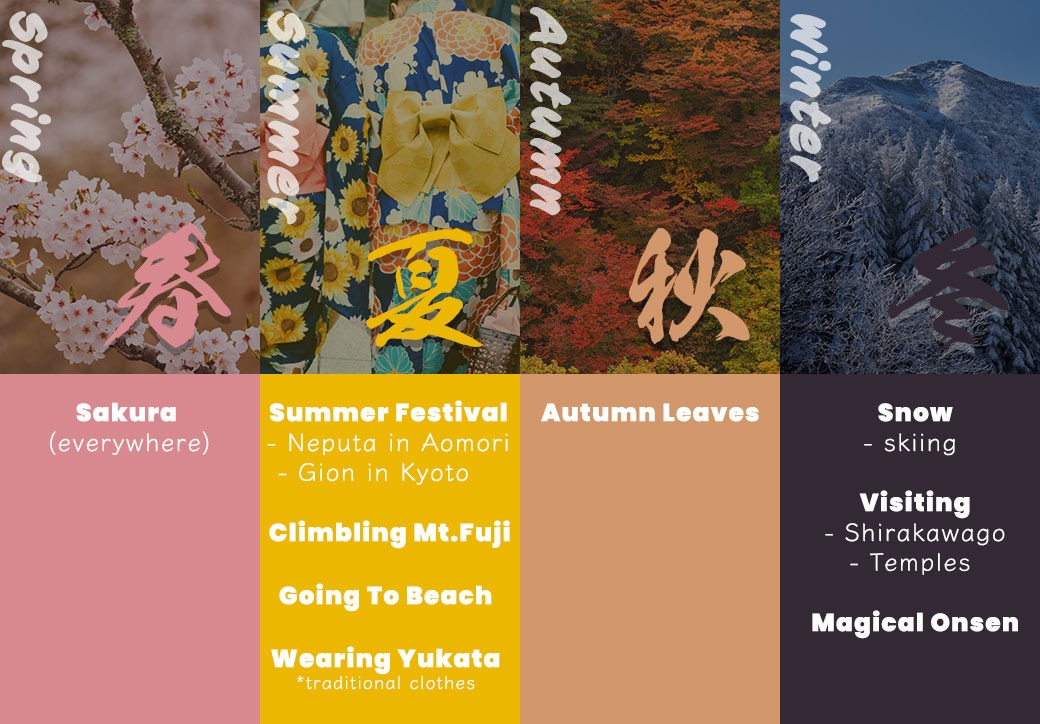
INTERNATIONAL AIRPORTS IN JAPAN
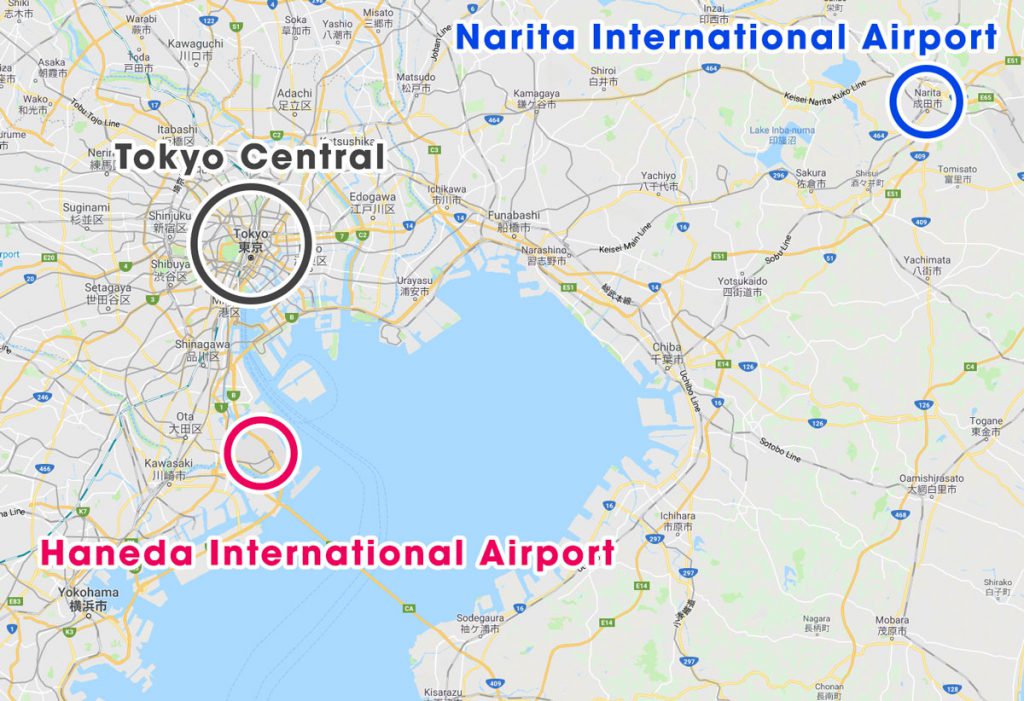
Those coming in Japan for the most part will land at Narita International Airport, although these days Haneda International Airport has become used more often for international flights. They are both large, modern airports with the things large, modern airports should have. Here are both airports in detail.
NARITA INTERNATIONAL AIRPORT

Narita International Airport (=成田国際空港) is Japan’s busiest airport. It’s a little off to the east of Tokyo in Chiba prefecture, some 70 km away. It is newer than Haneda and more apt to cater to a large flux of traffic. Narita Airport is connected to 111 cities, from 39 countries. The airport is quite big, check the airport map below if you’re afraid of getting lost.

Getting to and from Narita is a bit more tedious, but is getting easier over the years. The three main options are the Skyliner, the Narita Express, or High-speed buses. Each take about one hour, the Skyliner being the quickest option, taking 47 minutes to reach Tokyo Station, but also being the most expensive at ¥3,020 (about 28 USD).

HANEDA INTERNATIONAL AIRPORT
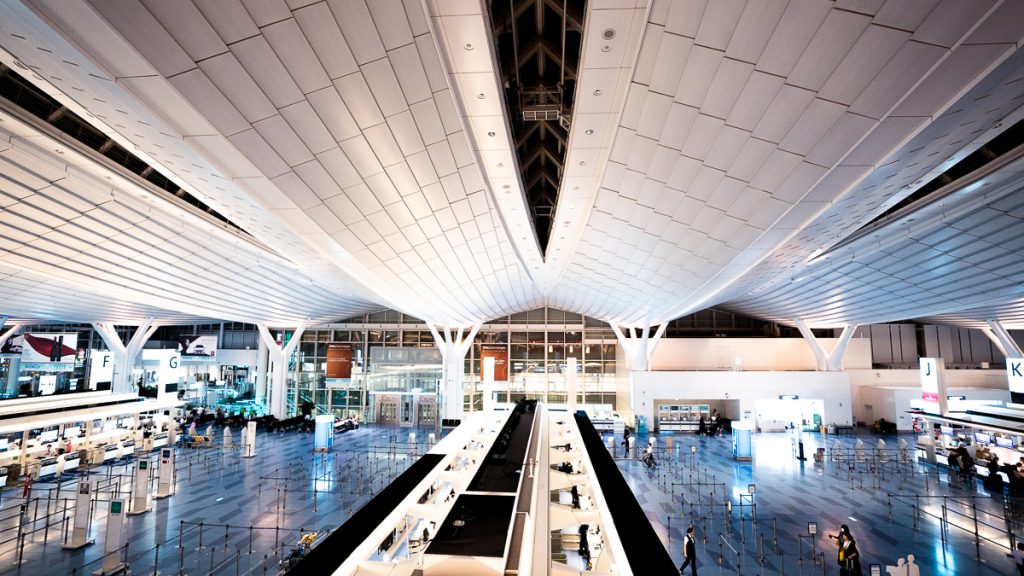
Although less frequently used for international flights, older, and less large than Narita, Haneda (=羽田国際空港) is the more convenient of the two. Haneda is located within Tokyo, which makes it much easier to get to your final destination than when arriving from Narita. However, when buying a ticket, don’t take this too much into consideration, you can get the city easily enough from both.

Haneda has only one terminal for international flights. Which is connected to over 30 cities across all continents, except Africa. As well as various local destinations.
Getting to and from Haneda Airport is generally done either through the Keikyu line or through the Tokyo Monorail. Both take you to central Tokyo in about 13 minutes. There are buses going to other parts of the Kanto area for those whose final destination is not Tokyo. These buses will take you as far as Shizuoka.

JAPANESE CURRENCY

The Japanese yen (¥, JPY) has served as Japan’s uniform currency since the Meiji restoration, as part of the reforms towards modernizations. Although the value of the yen, as with most currencies is in constant fluctuation, it is generally considered that 100 JPY is roughly equal to the one-dollar US.
There are currently six coins in circulation: ¥1, ¥5, ¥10, ¥50, ¥100, and ¥500. On the other hand, there are three bank notes: ¥1,000, ¥5,000, and ¥10,000. Five and 50 Yen are the popular japanese coins with holes you’ve probably seen before.
Click here to check the current exchange rate.
THE BEST WAYS TO EXCHANGE YOUR MONEY TO JAPANESE YEN
It’s extremely rare for other currencies to be accepted anywhere in Japan. As such, when you travel here, you have to exchange your money into yen to get anything done. Additionally, although debit and credit cards are becoming more and more accepted, their use is still not as common as in the US and other countries. Many restaurants do not accept them, still. You will need to carry cash. Luckily for you, you have various options to exchange your money into Japanese yen.
TRAVELEX

Travelex has the advantage of being present everywhere and allowing online purchase. As of the time of writing this, their rate is 1 USD = 99.57 JPY. This is much lower than the current value of the Yen. They also provide with prepaid travel cards loaded with whichever currency you would like at a fixed rate. The entire procedure to order to card can be done online on the website.
The major advantage for these cards is that they are not linked to your bank account, which is good for those worried about the security of their account. In addition, there are no ATM fees, so no extra costs.
JAPAN POST BANK (YUCHO GINKO)

When exchanging money, it’s usually wiser to do it in Japan than in your home country. The difference is when you exchange from home, you are buying yen, whereas when you exchange in Japan, you are selling your home currency.
People often look for various peculiar ways to exchange money, often with the aim to get the best rates possible. From experience, however, in most cases, unexpectedly, national banks tend to have the best rates. Japan Post Bank (=日本郵政), called “Yucho Ginko” (=ゆうちょ銀行) is, in my opinion, the easiest way to exchange money into yen. It’s a quick, simple process, and post banks are everywhere for you to find.
ATM WITHDRAWAL

If your home bank doesn’t have outrageous atm fees and exchange rates, I’d recommend just withdrawing from an ATM whenever you need cash instead of exchanging a large sum at once. Japan Post Bank and 7-Evelen accept international cards including VISA, Mastercard and Maestro. Both can also be found nearly everywhere and at the airport, so when there, do not rush to the nearest private exchange company and look for one of the ATMs from Japan Post Bank or 7-Eleven.
WATCH OUT FOR SHADY ESTABLISHMENTS
You may find random money exchange places in and around Tokyo that exchange money for fairly decent rates. I would personally avoid them. Most of them may be legitimate, but you risk falling upon those that aren’t and get ripped off.
WHERE TO WITHDRAW MONEY IN JAPAN
ATMs can be found nearly on every street, thanks to every convinience store having an ATM. However, all ATMs do not accept international cards. All 7-Eleven store ATMs accept international cards. In addition, Japan Post Bank ATMs also accept international cards. You can find Japan Post Bank ATMs in every post office, and increasingly in Family Marts.
TRANSPORT IN JAPAN
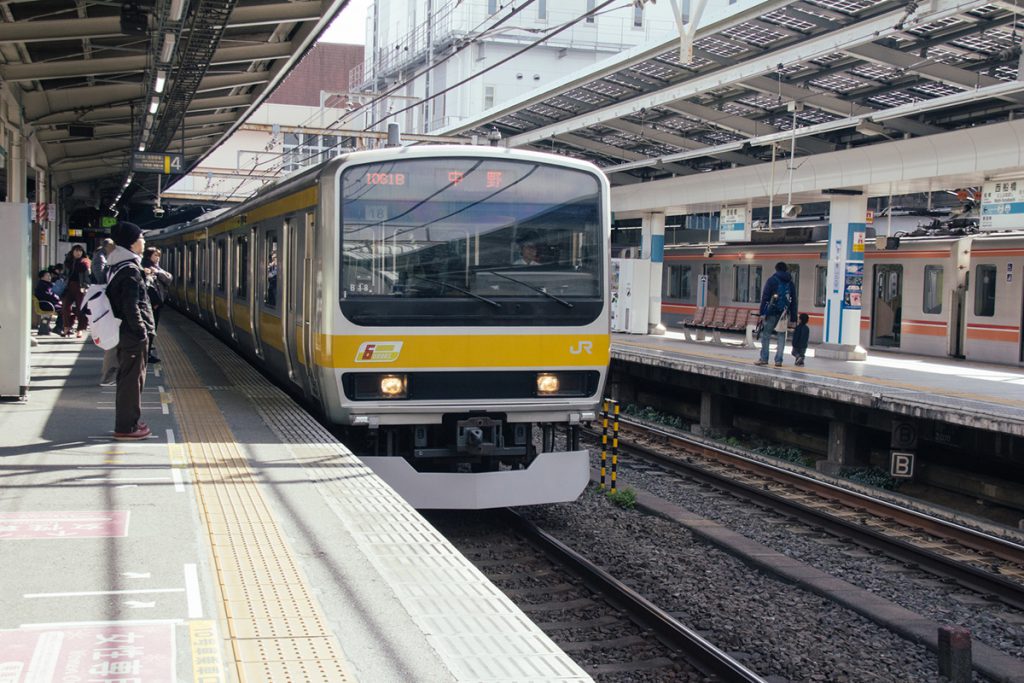
During your travels in Japan, you’ll find the country has an extensive and complicated transportation network. Within major cities, you will generally have a combination of subway, suburban trains, and buses. In smaller cities, it might be a little more limited, and you may find a bus system, as well as generally one train station per city connecting it to the regional train system. As a general rule, the metro will always be cheaper than the other options.
Tokyo in particular has a very extensive transportation system. It has 80 train lines, and over 700 stations making the most complex metropolis in the world. Because of this complexity and all the options, it can be somewhat terrifying to find your way through places. Luckily, in this technological day and age, there’s an app for that (many, in fact).
GOOGLE MAPS

ood ol’ trusted Google Maps. If there’s one app you should have on your phone in Japan it’s this one. Not only does it tell you how to get places, it also tells you the best way to get there using public transport, as well how much each option costs.
HYPERDIA

Hyperdia is especially useful for its advance search options when traveling between cities. It helps you find the best option between the many regional trains and Shinkansen, the hours, and prices. The app isn’t free, but the website is. Just use the browser version if you don’t want to spend the cash.
MAPS.ME

Maps.me has saved my life various times. It’s an offline map application with pre-saved maps of the entire Japan. It can be used as long as you have saved the map of the region you are in, and have your GPS enabled. In addition, it also gives you the train itinerary, but not the times.
THE BEST WAY TO TRAVEL BY SUBWAY IN JAPAN
The best way to travel by subway is to get either a Suica or PASMO from the ticket machine. They are contactless smart cards in which you can charge money and simply tap the gate sensor to use the many train lines in the city. Both those cards are interchangeable and can usually be used throughout the country. The difference between Suica and PASMO is simply the different lines that own them. Just get whichever one is available at the station you find yourself from the ticket machine.
Receiving change from vending machine

Here is a step-by-step guide to buy a Pasmo from a vending machine. Getting a Suica is essentially the same.






TOKYO TRAIN MAP

The Tokyo train system is truly terrifying. It’s a gigantic, extensive system which includes multiple companies, each with their own lines and stations. A ticket valid for one company’s lines may not be valid for others. However, if you buy a Pasmo or Suica as explained above, it automatically acts as a transfer ticket.
JAPAN RAIL PASS: CHEAP, CONVENIENT TRAVEL

The Japan Rail Pass is a pass available to non-residents of Japan. It can be purchased in Japan, or abroad through an agent. There is no online purchase option on the JR site. The JRP allows you to travel using the Shinkansen (high speed rail), as well as various regional and city trains and buses and many of the airport shuttles and trains. These MUST be JR trains. You cannot just use the JR pass for any random train. Luckily, JR trains are the most common. At purchase you have an option of seven, 14, or 21 days. Even if you are in Japan less than seven days, it might be worth getting the JR pass if you’ll be traveling between cities during your time here. A one way ticket to Osaka can easily run you about 15,000 yen all included (about 137 USD). In addition you get to choose between an ordinary, or green pass. The green is Japan’s version of the luxury class. It essentially provides larger sitting space in less crowded wagons. However, you have to reserve your seats when traveling green, which can be annoying. Checkout the table below for the options and prices.

DO I NEED A VISA TO TRAVEL TO JAPAN?

Nationals of 68 countries are allowed to travel to Japan visa free for up to 90 days. Nationals of Mexico, Austria, Switzerland, Germany, Ireland, the United Kingdom and Liechtenstein can apply for an extension to six months after those 90 days are over. Others are required to leave the country for at least 90 days before they can return for 90 days. Nationals of all other countries are required to have a visa even for touristic purposes. Visa issues are very country and individual specific, check with the embassy or consulate in charge of your country.
WORKING HOLIDAY VISA TO JAPAN
Nationals of various countries is eligible to apply for a Working Holiday Visa. This visa allows you to partake in working activities during your time in Japan, which traveling visa-free does not allow. Although your country has such an agreement with Japan, there may be a yearly limit to the number of people per year to which it can be given. Check out the following link for more information.

Click to zoom
DRIVING IN JAPAN: INTERNATIONAL DRIVING LICENSE

Along with a few other countries in the world, Japan drives on the left. Although it can be a little bizarre at first for those not used to it, it’s easy to get accustomed to.
If you’d like to drive while in Japan, you have to apply for an international driving permit (IDP). These are issued in your country by the organization in charge. These vary from country to country so do your research before coming if you’d like to drive.
International driving license is valid for a maximum of one year after which you’re expected to convert your license into a drivers license. It is illegal to drive in Japan with a regular license from your country, and you will be arrested if caught.
Those with permits from Estonia, Belgium, Slovenia, Germany, Monaco, France, Switzerland, and Taiwan are allowed to drive in Japan with an official translation obtained from the Japan Automobile Federation, through the embassies in Japan.
CAR RENTALS IN JAPAN

While I couldn’t recommend driving in major cities because of congestion and parking prices, there are cases where having a car can be handy. Those who’d like to venture into the countryside could benefit from having a car. Renting a car in Japan requires a credit card. There are a few companies which provide rental cars, including:
- Toyota Rent a Car
- Tocoo!
- Times Car (website in Japanese only)
While there are others, these seem to offer the best services, in English.
JAPAN AUTOMOBILE FEDERATION (JAF)

The Japan Automobile Federation is the organization which oversees most things road and driving related, including road safety and regulations. Those who are planning on driving in Japan are highly advised to go through their website, and read up on the information they provide. Ignorance of regulation does not help you escape punishment, as such, make sure you are familiar with all the rules and regulation necessary to drive properly and safely in Japan.
SAFETY IN JAPAN: IS JAPAN SAFE TO TRAVEL?

Crime in Japan is sort of a rarity. In 2018, the crime rate hit a record low as petty crimes such as theft dropped significantly. There is at present an average of three robberies per 100,000 individuals and violent crimes are almost unheard of. If you lose anything in Japan, it’s likely you’ll get it back in the state you lost it by going to the nearest train station to the place you lost it. This does not mean you should not observe caution as in any other country. Especially at the airport, if you’re taking a nap while waiting for your flight, make sure your baggage is near you and secure.
Japan is however prone to natural disasters, recording more earthquakes than anywhere in the world, and being home to many active volcanoes. Although infrastructure is built to sustain them, there is a risk for extremely deadly disasters occurring, although those are very rare. Get the “Safety Tips” app from the button below to inform yourself and get instant alerts and notifications on what may be happening during your stay in Japan.
USEFUL APPS WHILE TRAVELING IN JAPAN

There are various apps which are very useful when traveling in Japan. This includes the map and train itinerary ones described in the transportation section above.
FINDING WIFI

The Travel Japan Wifi app allows you to search for and automatically connect to hundreds of available public wifi hotspots throughout the country. For more information on wifi options in Japan, check out our article on the subject.
DICTIONARY
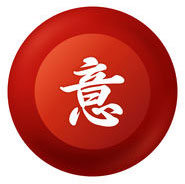
Imiwa (=”What does it mean?” in Japanese) is a great tool which allows you to search for kanji (Chinese characters used in Japanese) meanings by drawing them. This is especially useful for those who do not know how to search them by radical.
DICTIONARY

I’m a big fan of the Google Translate app. Although some of the translations can be a little off, it has an amazing feature which allows you to take a picture of texts in Japanese and will translate them. This also works with live translations. Simply point your camera towards the text, and the app will automatically translate the text live.
WHAT TO WEAR IN JAPAN
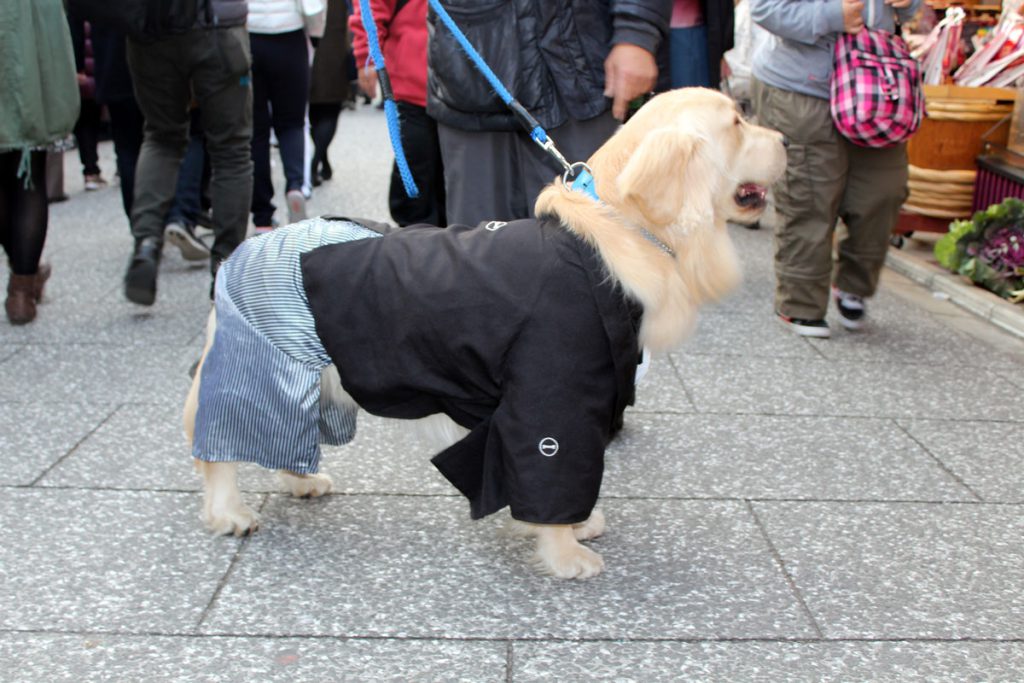
This, of course depends on the season. However, some things remain true. In Japan, in general, it’s accepted to show as much leg as possible, while showing skin towards the upper body is a lot more frowned upon.
Spring
Like fall, spring is an alternating period. It can vary day by day, so be sure to have both clothes for slightly warmer days, and a few hoodies or jackets for when the temperatures drop. Because of the jovial nature of the season, people in Japan tend to wear white and colorful clothes, compared to the grimmer colors you’ll find in fall.
SUMMER
Summer in Japan is really hot and humid, while interiors are cooled to the extreme. Make sure to dress light, but carry something to put on if the air conditioner is set too low.
FALL
Fall in winter is one of the better periods fashion-wise. You can afford to layer and not suffer from heat, while it’s not too cold that you don’t need a huge coat either.
WINTER
While winters in the large cities are relatively mild, isolation tends to be pretty bad. You will need proper winter clothing and expect temperatures around three to five degrees and less sometimes. A simple hoodie won’t do.
TRAVEL LIKE A LOCAL IN JAPAN

While having a set touristic itinerary filled with all the sights one “MUST” see while in Japan makes your life much easier, a lot of what makes Japan special is embedded in the everyday life of locals. See as many of the sights as you can, but try to meet locals. Try to find out where they like to hang out. Try to find foreigners who live in Japan. Try to find what special little place, food, aspect of Japan has kept them here all those years.



